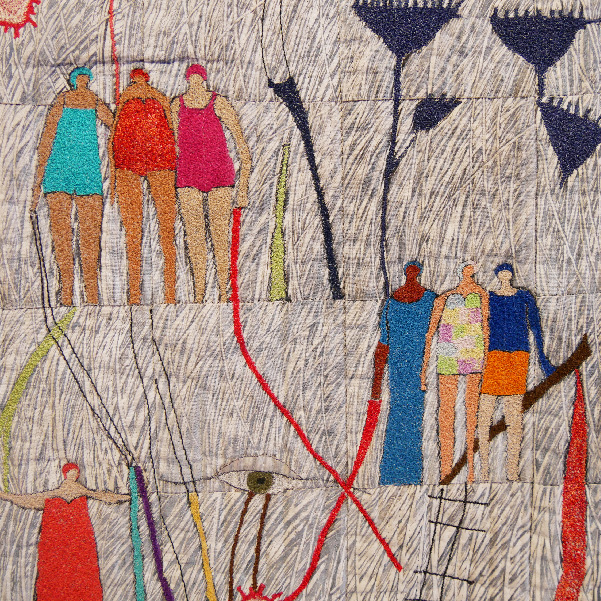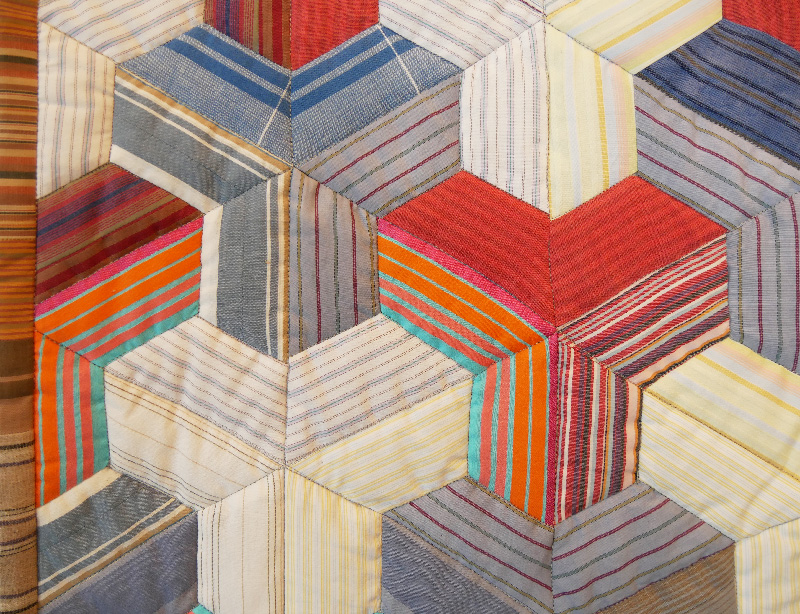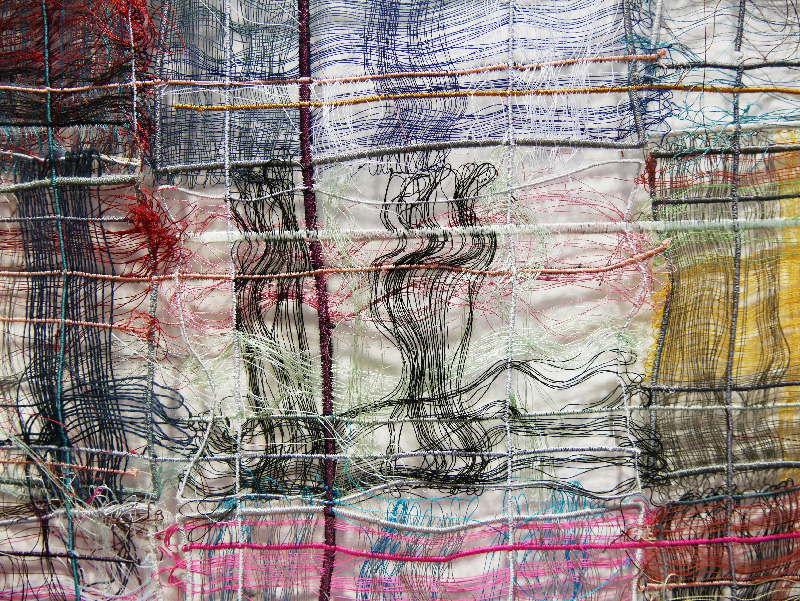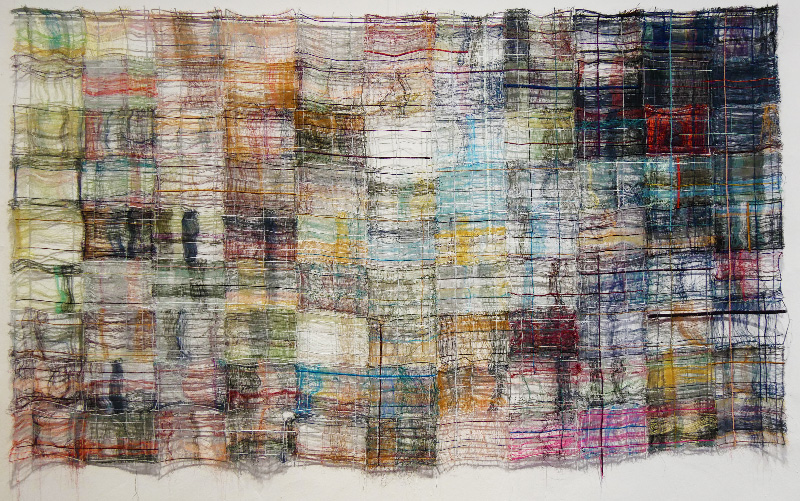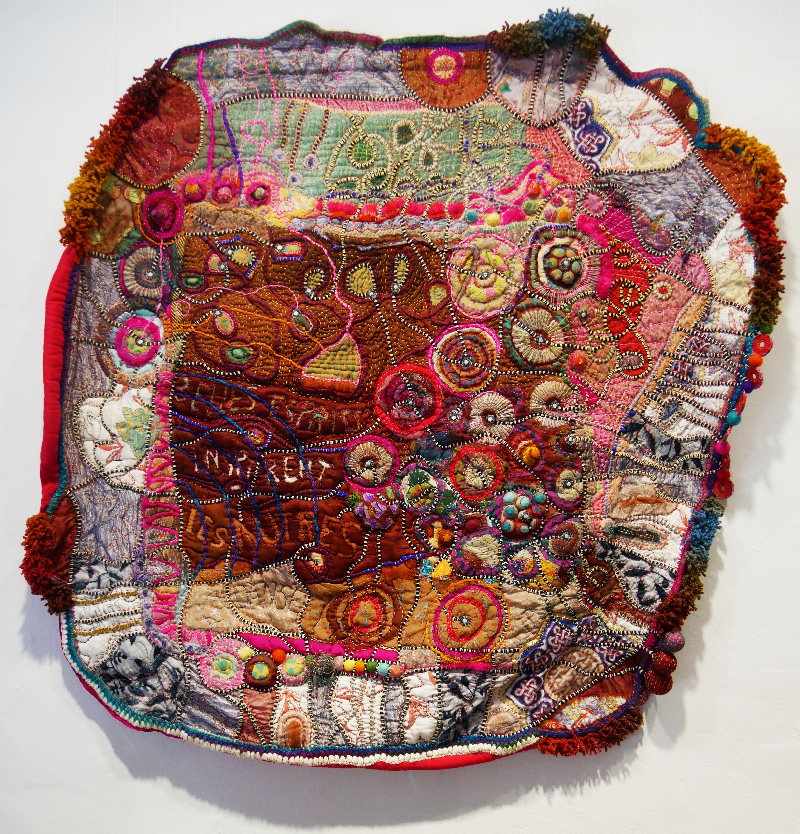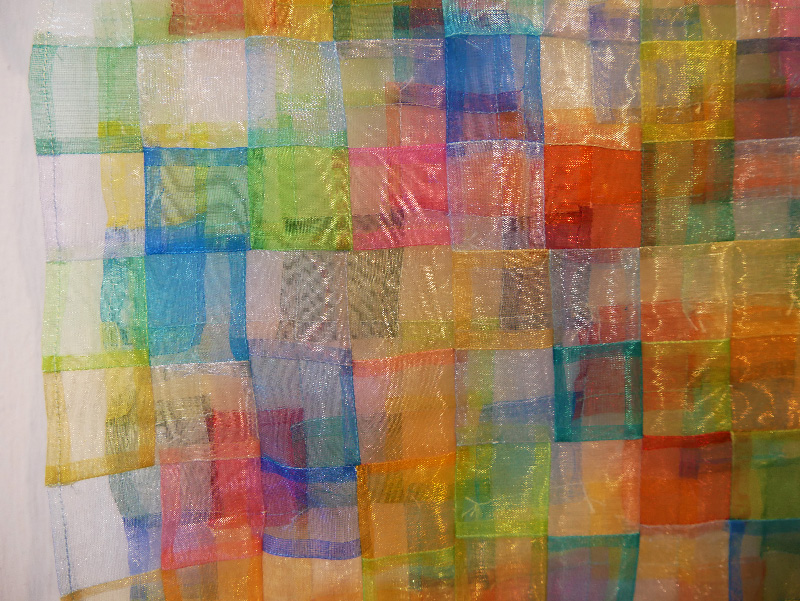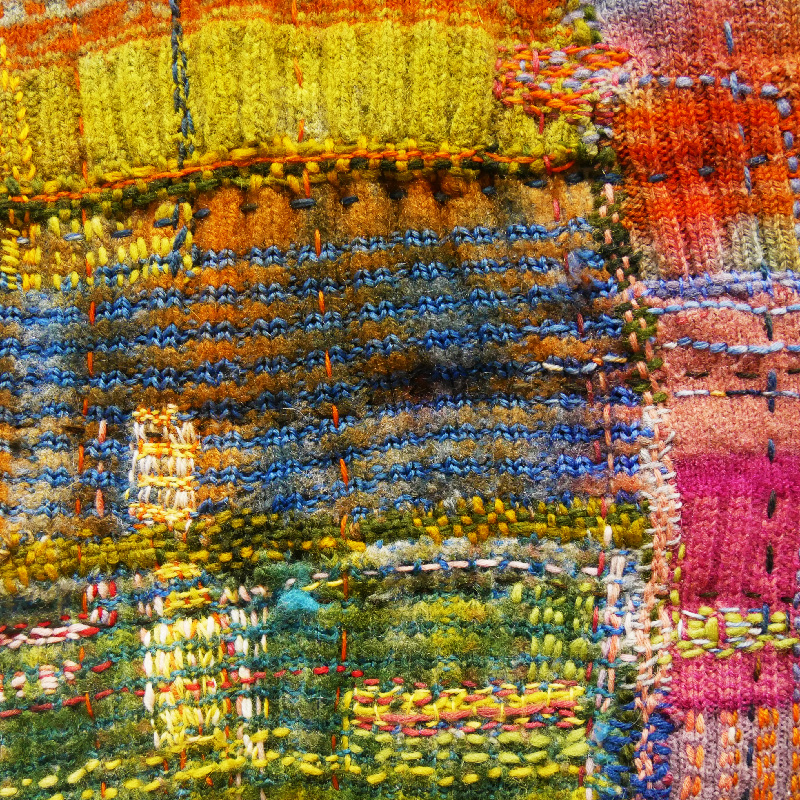
9th EUROPEAN QUILT TRIENNALE
The Max Berk Textile Collection · Kurpfälzisches Museum Heidelberg is organizing the ninth European Quilt Triennale, which will be exhibited in Heidelberg in spring 2025 (expected February 16th to May 4th, 2025) and then in the Textile Museum in Sankt Gallen/Switzerland (May 22nd to May 14th). September 2025) and District Museum Zons/Germany (October 10, 2025 to early January 2026). In addition, a collaborative cultural event with the 9th European Quilt Triennale as the centerpiece in the Finlayson area in Tampere, Finland (January/February 2026) is planned.
PARTICIPATION:
— Anyone who resides in Europe is eligible to participate.
TERMS OF PARTICIPATION:
— The work must have the basic structural characteristics of a quilt. It must be made of flexible material. Supplements with other materials are permitted. The entire work or the work made up of several individual parts must consist of at least two layers of material that are connected by lockstitches.
— The work can contain traditional elements, but its overall appearance must show the originality of the design idea. Craftsmanship and design stagnation, which only ends in perfection, is excluded. Copies and the execution of other people’s designs are not permitted, nor are quilts resulting from workshops.
–The work must not be older than 12 months at the time of application and must not be submitted to any other competition at the same time.
–The work must not have been or will not be shown publicly by the time of the exhibition in spring 2025
–A minimum size of 1m2 and a maximum size of 4 m2 must be observed. It is important to ensure that height is always stated before width when specifying the size on the forms and on the photographic material.
— The quilt must have a tunnel at least 10 cm wide on the back at the top edge, which should be 3 cm shorter on both sides than the outer edges of the actual quilt. An additional tunnel at the bottom is recommended. Three-dimensional objects that are to be presented freely standing or hanging in the room are also expressly permitted.
— Clothing items are excluded.
— Each participant can apply with a maximum of two papers (please use a separate form for each paper); However, a maximum of one work will be accepted for the exhibition. By smaking a submission, participants acknowledge the terms and conditions of participation in the competition and undertake to provide juried works for the entire duration of the exhibition. Failure to comply will result in general exclusion from the competition.
REGISTRATION:Ø Applications should be sent to: Max Berk Textile Collection · Kurpfälzisches Museum, PO Box 105520, D – 69045 Heidelberg, Germany or online at https://www.museum-heidelberg.de/Museum-Heidelberg/startseite/ exhibitionen/9_+ european+quilt-triennale+-+tender.html. Applicants will be informed by email that their application has been received.Ø The following documents must be submitted for each work:
▪ Registration form (not applicable for online applications)
▪ one unedited digital photo of the entire work and one detail(300 dpi, 18 x 18 cm, jpeg format, titled Name_Title of Quilt)
▪ 1 color photo of the entire work (optional, not applicable if applying online)
▪ 1 addressed envelope for returning the photographic material the size of theDocuments (not applicable for online applications)Submitting a work sample (max. A 4, no collection of materials) is voluntary, but is strongly recommended. It is used by the jury to better assess the quality of a work (can be submitted by post for online applications).Please do not submit your documents – if submitted by post – in the form of a rigid folder, but rather in loose form or in a form that can be removed from the folder.
— The registration fee of € 40 (for up to two works), which is not refundable, must be paid to account 24 007 at the latest by July 1, 2024, stating the booking number 5.8842 001474.8 and the keyword “Quilt Triennale”. Sparkasse Heidelberg (bank code: 672 500 20, BIC: SOLADES1HDB, IBAN: DE 14 6725 0020 0000 0240 07). Please enclose a copy of the transfer receipt with your application.Unfortunately, checks cannot be accepted due to the high fees involved, but cash can be sent in at your own risk (in this case, receipt of payment will be confirmed by email).The costs for the later return transport of the juried quilts are included in this registration fee, but only up to a maximum of € 75.
— Registration can be done in German, English or French.Ø The CDs (if applying by post) must be labeled with the name and title. Please mark the photos on the back in the upper right corner with a red dot or “TOP”, but not with your name, just with the title.In your own interest, please ensure that the photos are of good quality (color fidelity, neutral background, sharpness), as they will be used by the jury for evaluation. If the work is accepted, these digital photos will also be used to create the catalog, provided the participants do not submit any new image material. Photos on which a standardized color scale has been photographed make it easier to make corrections regarding color fidelity when creating the catalog.
— Applications that are incomplete or submitted after the closing date cannot be considered. Likewise, the material sent by post can only be returned if your application is accompanied by a return envelope of a suitable size and the registration fee of € 40 has been paid.
JURY:
— The five-person jury of well-known experts is composed as follows:▪ Nanna Aspholm-Flik, qualified textile designer, artisan, workshop owner of nannatextiles, lecturer and textile researcher, Germany/Finlan
▪ Jette Clover, journalist, artist, author, lecturer, member of QUILT ART, board member of SAQA, Belgium
▪ Paulina Sadrak, artist and textile designer, lecturer at the Strzemiński Academy of Fine Arts Łódź, winner of the Prize for Young Quilters and Beginners Under 40years of the 8th EQT 2021, Poland▪ Dr. Kristine Scherer, curator of the Max Berk Textile Collection, Germany
▪ Dr. Sabine Wilp, President of the Federal Association of Arts and Crafts, Head of the Hanover Crafts Form, GermanyThe judging is based on the documents submitted. Independence, individual handwriting, artistic expression and quality craftsmanship are assessed. The jury’s decisions are not justified. Furthermore, the jury reserves the right to subsequently exclude works based on the submitted originals that do not exactly match the submitted image material, do not meet the participation conditions or do not meet the expected standard of craftsmanship. Legal recourse remains excluded.
— The participants will be notified of the jury’s result as quickly as possible.
PRICES:
— A total of three prizes will be awarded:▪ Doris Winter Memorial Prize1 for innovation in the areas of materials, technology and Design worth €5,000, donated by the Betty Barclay group of companies
▪ Prize for young quilters and beginners under 40, endowed with € 1,000.
▪ Prize for innovation in a large format (min. 3 m2, maximum 4 m2), endowed with € 1,000.The winners are chosen by the jury; However, the jury reserves the right not to award one or the other prize if none of the submitted applications meet the respective requirements.
TRANSPORT:
— The participants are responsible for the costs of transport to the Max Berk Textile Collection · Kurpfälzisches Museum. The organizer or the participating museums will cover the costs for transport between the individual exhibition locations and for return transport to the participants (only up to a maximum of € 75).
— Work from countries that are not members of the EU should be sent at least with a declaration of origin and a proforma invoice. An accompanying ATA carnet is not mandatory, but makes import and export easier (you can obtain this together with the declaration of origin from your local chamber of commerce and industry). Any customs fees incurred due to the absence of these accompanying documents must be borne by the participant or refunded to the organizer.
— The packaging to be provided by the participant must ensure that any risk of damage is avoided when transporting the work by post, UPS or freight forwarding. The organizer is not liable for damage caused by inadequate packaging. Furthermore, it must be ensured that the object and its packaging can be handled without aids such as pallet trucks etc. in terms of dimensions and weight.
INSURANCE:
— The work is insured from the day of arrival up to and including the return by the Max Berk Textile Collection or by the other museums involved, subject to the usual exceptions.In the event of damage, the participant is obliged to provide proof of the actual value.
